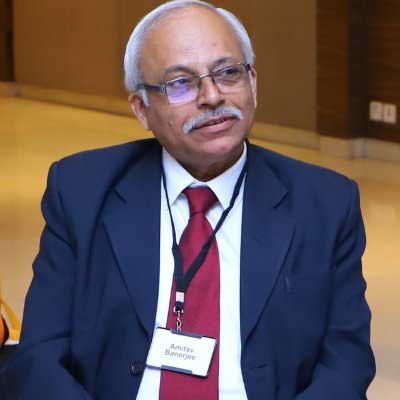Neglected and Endemic
 While global attention is drawn to pandemic threats like Covid-19 and Mpox, epidemics in India continue to claim far more lives each day without media coverage or public outcry. The price of ignoring these public health crises is steep, and it’s time to shift focus to our local endemic diseases and healthcare challenges.
While global attention is drawn to pandemic threats like Covid-19 and Mpox, epidemics in India continue to claim far more lives each day without media coverage or public outcry. The price of ignoring these public health crises is steep, and it’s time to shift focus to our local endemic diseases and healthcare challenges.
By Dr Amitav Banerjee
Humans have always faced and feared infectious diseases, which have caused great havoc and disruptions throughout history, particularly before the advent of antibiotics and modern medical
advancements. From recorded history and fossil evidence, it is clear that major scourges like plague, typhus, smallpox, cholera, yellow fever, influenza, scarlet fever, malaria, diphtheria, poliomyelitis, and other infectious diseases have devastated entire populations, leading to dreadful epidemics. When an epidemic spreads unchecked over large geographical areas and across multiple countries, it evolves into what we term a pandemic.
Throughout history, pandemics have disrupted human progress, leaving misery and devastation in their wake. Vast swathes of Europe were decimated by the plague between the 14th and 17th centuries. In the 16th century, smallpox and other diseases ravaged and ultimately destroyed the Aztec and Inca civilisations in Latin America, killing large numbers of those who became infected.
Military history, dating back to the Middle Ages and antiquity, is replete with accounts of armies depleted and defeated by pestilence and infections before even engaging with their human enemies. Epidemics often thwarted the best-laid plans of kings, military leaders, and advisors, turning the tide of battles and wars.
The Western world developed much faster than the East, and many regions of the East still lag behind. Consequently, many infectious diseases ceased to pose significant public health threats in the West. Over the years, this led the medical establishment in the Western world—considered the bellwether of global health trends—to lose interest in these diseases, relegating them to the category of neglected tropical diseases. This shift has lowered the threshold for triggering pandemic panic in the West, and once the panic button is pressed there, the entire world follows suit. This happens despite the fact that many developing countries continue to face far more severe public health threats from the much neglected tropical diseases the West now ignores.


The growing reliance on simulations and predictive modelling has opened the door for pandemic predictions and preparedness, primarily driven by experts from the West. However, this approach often turns a blind eye to the existing public health scourges that still afflict the majority of the world’s population, particularly those in poorer countries.
Why Has the Western Scientific Community Lost Interest in So-called “Neglected Tropical Diseases”?
The shifting priorities of medical research and development have historically been dictated by global power dynamics. The very diseases that are now categorised as neglected tropical diseases in developing countries once plagued Europe and America between the 17th and 19th centuries. Malaria, for instance, remained a problem in the West until well into the 20th century. Other infectious diseases such as plague, typhoid, cholera, tuberculosis, typhus, and smallpox posed major health hazards during the Victorian era.
During this period, Western doctors—particularly those serving in British colonies—took a keen interest in these diseases, now relegated to obscurity. This was driven by two main factors: first, these diseases were still endemic in their home countries, and second, the colonial armies, civil servants, and their families were exposed to these illnesses in foreign lands.
In fact, tropical medicine originated as a by-product of the British Empire, or Raj. The rise and fall of tropical medicine coincided with the rise and fall of British colonialism. The field flourished due to the vested interests of colonial rulers, who prioritised the health of British personnel, both during their time abroad and upon their return to Britain. Tropical medicine drew knowledge from a variety of fields, including public health, hygiene, travel medicine, the natural history of disease, the theory of evolution, and the “germ theory” of disease causation. The golden age of parasitology, spurred by pioneers like Sir Patrick Manson and Sir Ronald Ross, established tropical medicine as a distinct discipline.
In the 19th century, when the British Empire was at its zenith, Joseph Chamberlain, Secretary of State for the Colonies, became convinced of the importance of investing in research on tropical diseases, which claimed a heavy toll on the “servants of the Raj.” Trade, agriculture, and administration faced significant obstacles due to these diseases, which Chamberlain saw as barriers to “constructive imperialism.” He recognised that research into tropical medicine was vital to the British Empire’s prosperity, to the point where it became regarded as a “colonial science.” The work of Sir Ronald Ross on malaria, conducted in India and earning him a Nobel Prize, further cemented the importance of tropical medicine and public health in British India.
These developments laid the groundwork for the establishment of the London School of Tropical Medicine in October 1899. During the inaugural address, it was stated, “…the school of Tropical Medicine strikes, and strikes effectively, at the root of the principal difficulty in most of our colonies…diseases. It will make government more efficient. It will encourage commercial enterprise. It will conciliate and foster the native.” At a fundraising dinner for the new institution, Chamberlain added, “…the man who successfully grapples with this foe of humanity, and finds a cure for malaria, the fever desolating our colonies, and makes the tropics liveable for white men, will do more for the world, and more for the British Empire, than the man who adds a new province to the wide dominions of the Queen.”

However, with the decline of colonialism after the Second World War, the West gradually abandoned its focus on tropical diseases. This shift was further accelerated by the significant improvements in living standards in Western countries, which led to the decline of these diseases in the region. The discipline of tropical medicine, which reached its zenith during the British Raj, lost its prominence in developed countries, where it was gradually replaced by “travel medicine.”
What is past for the West, is present for the East, and we can ill afford to ignore this.
Developing countries, still struggling to control these diseases, can ill afford to overlook them as major public health problems. Unfortunately, with changing times, low priority is being given to our own pressing health issues. We should heed what the British realised centuries ago: controlling our endemic diseases would lead to better governance and economic development.
Regrettably, globalisation and market forces are pulling bright researchers in the opposite direction, towards the glitz and glamour associated with the diseases of the affluent, rather than the diseases of the poor. Research in developing countries is mostly funded by private agencies, which are more interested in conducting clinical trials for newer drugs and vaccines—easier and more profitable—rather than tackling the root causes. The Rockefeller Foundation, which once supported schools of public health, later funded Clinical Epidemiology Training Programs aimed at making clinicians competent in carrying out clinical trials. With such high-pressure promotion and the involvement of many interest groups, particularly big pharmaceutical industries with their profit motives and commitments to shareholders, it is unlikely that tropical medicine will regain its pride of place.
The price we are already paying for this neglect: The Present Silent Pandemics!
We hold a very poor scorecard on our prevalent endemic diseases, which kill far more people daily than the recent Covid-19 pandemic ever did, even at the peak of the second wave. These deaths occur day in and day out without media hype or the level of public panic generated by even a single case of Mpox, despite it causing no deaths. Even without complete data, due to poor monitoring of neglected endemic diseases, just two illustrative examples can drive home the point and reveal our complacency regarding local public health problems.

Tuberculosis alone kills 1,400 Indians every day. Recently, there was a stockout of anti-tuberculosis drugs for months, interrupting the treatment of many TB patients. This can have severe consequences, as it increases the risk of mortality and gives rise to drug-resistant and extra drug-resistant tuberculosis, which has a mortality rate of over 10 per cent even after treatment. The health advisers to the Government of India and the media should have drawn attention to this and mobilised support to get the TB drugs without a single day’s delay. Instead, these real emergencies in the present received little attention, while contingency plans for future pandemics, real or imagined, were being worked out, even proposing stringent public health acts to enforce stricter pandemic control measures. In fact, stricter acts are required to fix accountability for the interruption of supplies of anti-TB drugs.
Similarly, we have an ongoing, poignant pandemic among children. In India, 4,000 children die daily from preventable diseases. Shouldn’t TB and child deaths be declared a bigger public health challenge in India than hypothetical future pandemics?
Moreover, other silent pandemics across the country make the Covid-19 pandemic, with its infection fatality rate of 0.03–0.05 per cent in those under 69, pale in comparison. Road traffic accidents kill over 400 young people daily; typhoid, which is endemic in India, has a mortality rate of 1–3 per cent in treated cases and 10–30 per cent in untreated ones; 70 per cent of dengue cases in Asia occur in India; Japanese encephalitis, with a mortality rate of 10–60 per cent, ravages parts of the country each year; scrub typhus, with a mortality rate of 1–3 per cent in treated cases and 30 per cent in cases of missed diagnosis, is endemic in certain pockets; leptospirosis, with a case fatality rate of 5–15 per cent, reappears after every monsoon; and rabies, with a 100 per cent mortality rate, kills 18,000–20,000 Indians annually according to WHO estimates—far more than Nipah, Ebola, or bird flu, or any other fancy viruses, have since their discovery. If Mpox, a self-limiting disease in healthy individuals, can be declared a public health emergency of international concern by the WHO, it is baffling why our endemic diseases are not qualifying for this title. When we have so much unfinished business on our hands, why, like Don Quixote and Sancho Panza, should we wait for a pandemic of Disease X to strike? This luxury can be left to the West.
What should we focus on, guided by the principles of Epidemiology, Public Health & Health Economics
We should focus on our own research agenda, based on our public health priorities. For that, we need proper monitoring and surveillance of all our endemic diseases. Lessons from the Covid-19 pandemic, during which daily cases and deaths were monitored, can be adapted to our endemic diseases. We should also encourage cost-benefit and economic analysis of various interventions before rushing to implement drastic measures with little evidence.

 Doctors practicing in our country should fully take advantage of the research opportunities provided by the vast variety of regionally prevalent diseases. As one of the founders of tropical medicine, Sir Patrick Manson, stated: “The tropical practitioner enjoys opportunities for original research and discovery far superior in novelty and interest to those at the command of his fellow inquirer in the well-worked field of European and American research.” These words from the doyen should inspire researchers in India.
Doctors practicing in our country should fully take advantage of the research opportunities provided by the vast variety of regionally prevalent diseases. As one of the founders of tropical medicine, Sir Patrick Manson, stated: “The tropical practitioner enjoys opportunities for original research and discovery far superior in novelty and interest to those at the command of his fellow inquirer in the well-worked field of European and American research.” These words from the doyen should inspire researchers in India.
If we do not take the lead in research on pandemics and continue our dependency on grants from international donors, with their own conflicts of interest and short-sightedness, we will facilitate “medical imperialism” indefinitely, while our population continues to suffer from silent pandemics ignored by the media and health policymakers. The short-sighted mathematical models from Imperial College London, which shut down the world with immense collateral harm, should serve as a warning to us. We have enough firsthand experience and expertise in dealing with communicable diseases day in and day out, which should make the West look to us for direction, rather than us dancing to their tunes.
Jai Hind!.
(The author is a renowned epidemiologist and currently serves as Professor Emeritus at DY Patil Medical College, Pune. Having served as an epidemiologist in the armed forces for over two decades, he ranked in Stanford University’s list of the world’s top 2 per cent scientists in 2023 and 2024. He is also the author of the book “Covid-19 Pandemic: A Third Eye.”)

